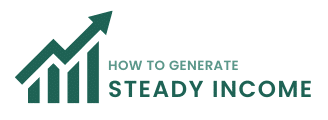Imagine you’re at a summer barbecue, and your cousin—usually Mr. Reliable—admits his credit score just took a nosedive. You’d probably hesitate to lend him $50, right? That’s the vibe in global markets after Moody’s downgraded the U.S. credit rating in March 2025. The U.S., long seen as the world’s safest borrower, got a dent in its financial reputation. It’s not a crisis, but it’s got investors, banks, and everyday folks like us paying attention.
I’ve been writing about finance for over a decade, and I’ve seen markets weather plenty of storms. This downgrade isn’t the apocalypse, but it’s a signal to get smart about your money. Let’s break down what happened, why it matters, and how it might hit your wallet—no jargon, just the stuff you need to know.
Why Did Moody’s Pull the Trigger?
Moody’s didn’t downgrade the U.S. on a whim. Their March 2025 report laid out some serious concerns about America’s fiscal health. Here’s the gist:
- National debt explosion: The U.S. debt clock ticked past $33 trillion in 2024, and it’s growing faster than my toddler’s Lego tower. That’s roughly $100,000 per American, if you’re keeping score.
- Chronic budget deficits: The government’s been spending more than it earns for years, with deficits projected to hit $2 trillion annually by 2030.
- Political circus: Congress keeps playing chicken with the debt ceiling, nearly shutting down the government twice in 2024. It’s like watching a reality show with trillion-dollar stakes.
- Policy fog: With tax reforms and spending plans up in the air, no one knows what the fiscal future holds.
Moody’s isn’t saying the U.S. is about to default—America’s still a safer bet than most countries. But they’re waving a yellow flag, warning that the long-term outlook is shakier than it used to be.
What Does a Downgrade Actually Mean?
Think of a credit rating like a report card for a country’s borrowing ability. Agencies like Moody’s, S&P, and Fitch grade countries from AAA (top-notch) to junk status. A downgrade—say, from AAA to AA+—is like going from an A+ to an A-. It’s still a good grade, but it makes lenders a bit nervous.
For the U.S., this means investors might demand higher interest rates to buy Treasury bonds, which are the government’s way of borrowing money. Higher rates ripple through the economy, affecting everything from mortgage payments to your retirement account. It’s like a pebble in a pond—the splash starts small but spreads wide.
How This Hits Your Finances
So, how does this affect you, whether you’re a saver, borrower, or investor? Let’s break it down.
Savings and CDs: A Silver Lining
If there’s a bright spot, it’s that higher interest rates can boost returns on savings accounts and certificates of deposit (CDs). My local credit union just bumped their 12-month CD rate to 4.5%, and online banks like Ally are offering similar deals. If you’ve got cash sitting in a low-yield account, now’s the time to shop around for better rates.
Loans and Credit Cards: Brace for Higher Costs
Borrowing’s getting pricier. The downgrade has pushed up Treasury yields, which banks use as a benchmark for loans. Here’s what to watch:
- Credit cards: Average APRs are already near 20%. Post-downgrade, some issuers are nudging rates higher. I got a notice from my Visa last week warning of a 1% hike.
- Personal and auto loans: New car loans are creeping toward 7%, and personal loans aren’t far behind.
- Refinancing: If you were hoping to refinance your student loans or home equity line, expect steeper rates.
Mortgages: Tougher Times for Homebuyers
Treasury yields jumped after the downgrade, pushing 30-year mortgage rates to around 7.2% in April 2025, up from 6.5% a year ago. For a $300,000 home, that’s an extra $150 a month in payments. If you’re house-hunting, you might need to adjust your budget or consider a shorter-term loan to keep costs down.
Stock Market: Buckle Up for Volatility
Markets hate uncertainty, and this downgrade delivered a jolt. The Dow dropped 3.2% in the week after Moody’s announcement, and the S&P 500 wasn’t far behind. If you’re checking your brokerage app, you might see some red. But don’t panic—volatility is par for the course. Long-term investors who stay put usually come out ahead.
Retirement Accounts: A Temporary Dip?
If you’ve got a 401(k), IRA, or pension, market swings can feel like a punch to the gut. My sister called me last week, worried her 401(k) lost 4% overnight. I reminded her of 2011, when S&P downgraded the U.S. Markets tanked briefly but recovered within months. If you’re years from retirement, these dips are just noise. If you’re closer to retiring, though, it might be worth checking your asset mix with a financial advisor.
The Bond Market and Treasury Yields
The U.S. borrows by selling Treasury bonds, and a downgrade makes investors demand higher yields to compensate for perceived risk. Since March, 10-year Treasury yields have climbed to 4.8%, up from 4.2% last fall. That’s bad news for bond prices, especially long-term ones. If your portfolio’s heavy on bonds, you might see some losses. I’ve been trimming my long-duration bond funds and leaning into shorter-term options to dodge the worst of it.
Lessons from History
This isn’t the U.S.’s first downgrade rodeo. In August 2011, S&P cut the U.S. rating from AAA to AA+. Markets plunged— the S&P 500 fell 6% in a week—but they bounced back by year-end. Treasury bonds, surprisingly, stayed in high demand as a safe haven. The economy kept growing, albeit with some bumps. The takeaway? Downgrades spark short-term chaos, but the U.S.’s financial clout usually pulls through. Investors who held steady in 2011 were glad they did.
Five Steps to Protect Your Finances
I’m not one for doom and gloom, but I’m all about being prepared. Here are five moves to consider, based on what’s worked for me and my clients:
- Review your debt: Check your credit card rates. If they’re climbing, look for a 0% balance transfer deal. I saved $200 in interest last year by switching cards.
- Lock in fixed rates: If you’re eyeing a mortgage, car loan, or home equity line, go fixed-rate to shield yourself from future hikes.
- Pad your emergency fund: Aim for 3-6 months of expenses. With job markets potentially wobbling, it’s your safety net.
- Rebalance your portfolio: If you’re overexposed to bonds or U.S. stocks, diversify. I’ve added some international ETFs to spread my risk.
- Stay calm: Don’t sell in a panic. My dad dumped his stocks during the 2011 downgrade and missed the rebound. Learn from his mistake.
Should You Talk to a Financial Advisor?
If all this feels overwhelming, you’re not alone. I sat down with my financial advisor last month to tweak my plan, and it was worth the $150 for an hour of clarity. A pro can help you assess your debt, investments, and retirement goals in light of the downgrade. If you’re nearing retirement, buying a home, or just want peace of mind, it’s a smart move. Look for a fee-only advisor to avoid sales pitches—check sites like NAPFA.org for reputable ones.
The Bigger Picture
Moody’s downgrade is less about today’s economy and more about tomorrow’s challenges. The U.S. faces tough choices— like tackling the debt without spooking markets or voters. As a taxpayer, I’m frustrated by the gridlock, but as an investor, I know the U.S. remains a global financial powerhouse. This downgrade is a nudge to get our fiscal house in order, not a death knell.
Final Thoughts: Stay Sharp, Stay Steady
Moody’s downgrade is a wake-up call, not a catastrophe. It’s a reminder that even the U.S. isn’t immune to financial reality checks. You might feel the pinch through higher loan rates, pricier mortgages, or a wobbly 401(k), but with a few smart moves—reviewing your debt, boosting savings, and keeping your cool in the markets—you’ll come out fine.
Stay curious, keep learning, and don’t let the headlines scare you. You’ve got this. And if you’re unsure where to start, grab a coffee, call an advisor, and make a plan. Your future self will thank you.
FAQ: What You Need to Know About Moody’s U.S. Credit Downgrade
What exactly is a credit rating downgrade?
A credit rating is like a report card for a country’s ability to repay its debts. Agencies like Moody’s grade countries from AAA (super reliable) to lower ratings. A downgrade, like the U.S. going from AAA to AA+, means Moody’s thinks lending to the U.S. is a bit riskier now. It’s not a crisis, but it makes borrowing pricier.
Why did Moody’s downgrade the U.S. credit rating in 2025?
Moody’s pointed to a few red flags: the national debt soaring past $33 trillion, annual budget deficits nearing $2 trillion, political gridlock over the debt ceiling (like Congress bickering at a family reunion), and uncertainty about future tax and spending policies. They’re worried about the U.S.’s long-term fiscal health.
How does this affect my savings account?
There’s a silver lining here! A downgrade can push up interest rates, which means better returns on savings accounts and CDs. For example, some banks are offering 4.5% on 12-month CDs now. If your money’s in a low-yield account, shop around for a better deal.
Will my credit card or loan payments go up?
Probably, yeah. The downgrade has bumped up Treasury yields, which banks use to set loan rates. Credit card APRs, already around 20%, might climb another percentage point. Auto loans and personal loans are also getting pricier—think 7% or higher for new loans.
I’m planning to buy a house. How does this impact my mortgage?
Mortgage rates are feeling the heat. Since the downgrade, 30-year mortgage rates have hit about 7.2%, up from 6.5% last year. For a $300,000 loan, that’s an extra $150 a month. You might need to budget tighter or consider a 15-year loan to keep payments down.
Is my 401(k) or IRA in trouble because of the downgrade?
Markets don’t love surprises, and the downgrade caused some jitters—the Dow dropped 3.2% in a week. Your 401(k) or IRA might take a short-term hit, but don’t panic. In 2011, after S&P’s downgrade, markets recovered within months. If you’re far from retirement, stay the course.
What’s happening with Treasury bonds and yields?
The U.S. borrows by selling Treasury bonds. Post-downgrade, investors want higher yields to offset the risk, so 10-year Treasury yields jumped to 4.8% from 4.2%. That means bond prices, especially for long-term bonds, are dropping. If you own bonds, check your portfolio’s exposure.
Has this happened before, and what was the outcome?
Yup, back in 2011, S&P downgraded the U.S. from AAA to AA+. Markets tanked briefly— the S&P 500 fell 6%—but recovered by year-end. Treasury bonds stayed popular, and the economy kept growing. History suggests the 2025 downgrade will cause short-term noise but not long-term doom.
What can I do to protect my finances right now?
Here’s my playbook: check your credit card rates and consider a balance transfer to save on interest (I saved $200 last year this way). Lock in fixed-rate loans to avoid future hikes. Build your emergency fund to cover 3-6 months of expenses. And don’t sell stocks in a panic—steady wins the race.
Should I talk to a financial advisor about this?
If you’re feeling lost, an advisor can be a game-changer. I spent $150 for an hour with mine last month, and it clarified my plan. They can assess your debt, investments, or retirement goals in light of the downgrade. Look for a fee-only advisor on sites like NAPFA.org to avoid salesy types.

































